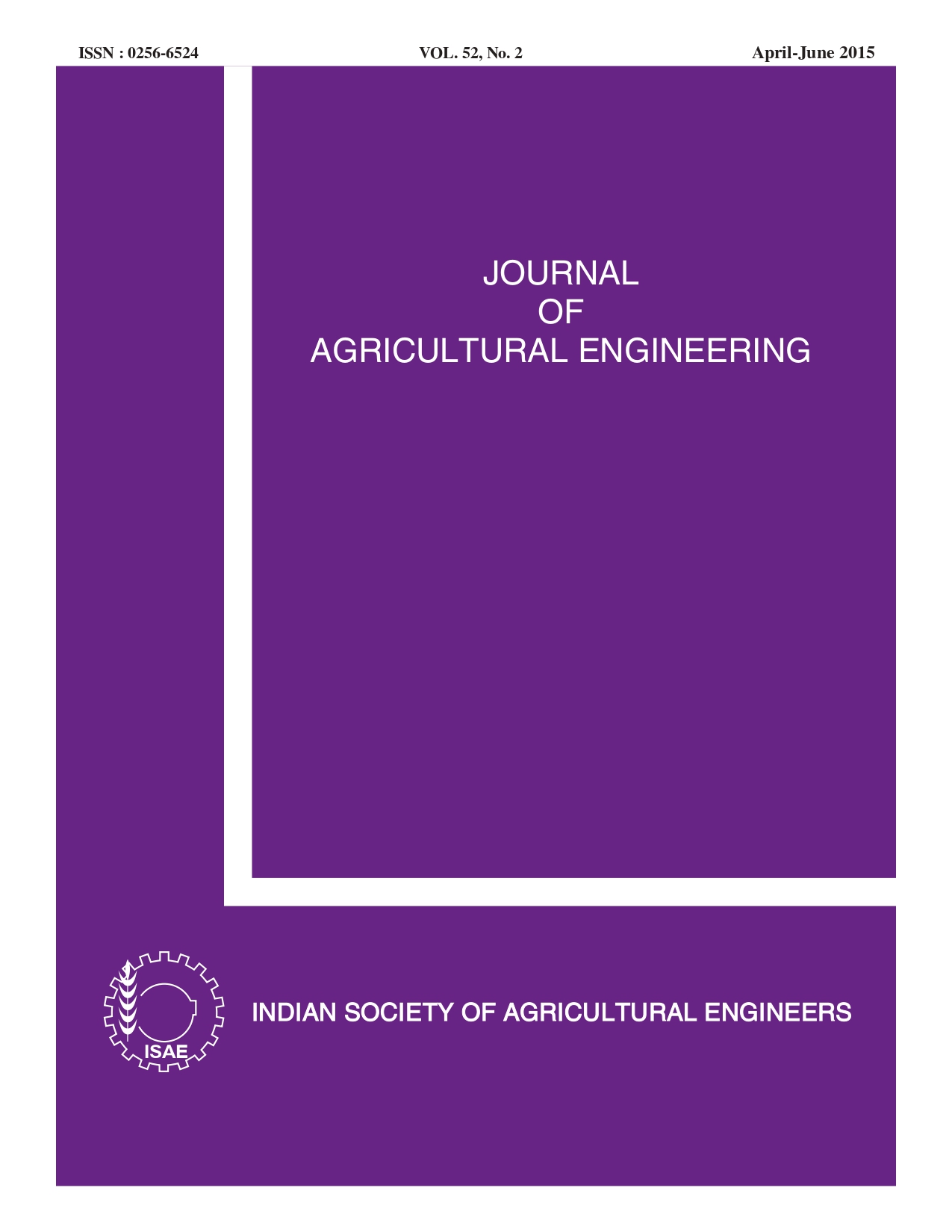Optimization of Operational Parameters of a Dust Separation System for Straw Combine
DOI:
https://doi.org/10.52151/jae2015522.1572Keywords:
Wheat straw, straw combine, ash content, acid insoluble ashAbstract
Astudy was undertaken to find out the optimum design parameters of dust separation system of straw combines. Experiments were conducted with five bed thicknesses viz. 20, 30, 40, 50 and 60 mm for three different shaking speeds viz. 160, 210 and 260 and three different sieve stroke lengths viz. 10 mm, 15 mm and 20 mm. Sieves with three different sieve openings of 0.208, 0.246 and 0.295 mm were used. Per cent mass separation for all bed thicknesses decreased with time from 10 s to 40 s, and thereafter became constant up to 60 s. In all experiments, cumulative mass separation increased for each durations with increase in straw bed thickness from 20 mm to 60 mm. Acid insoluble ash decreased with time up to 40 s at each straw bed thickness, after which it attained nearly constant value up to 60 s of time interval. With increase in straw bed thickness from 20 mm to 60 mm, cumulative mass separation increased for each duration of experiment. Similarly, at each straw bed thickness, acid insoluble ash decreased with time up to 40 s, after which it attained nearly constant value up to 60 s of time interval. Optimum design parameters for mechanical sieving like straw retention time, straw bed thickness, sieve opening and stalking speed for satisfactory cleaning of wheat straw were found to be 40 s, 50 mm, 0.208 mm and 160 stoke.min-1, respectively.
References
Anon. 2013.www.indianstat.com Site registered with Central Library, Punjab Agricultural University, Ludhiana, India.
Ahuja S S. 1971. Studies on design and operational factors in a mechanical separation system for wheatgrain. Unpublished M.Tech.Thesis, Punjab Agricultural University, Ludhiana, India.
Ahuja S S; Kalkat B S; Sharma V K. 1993. A perspective on wheat straw combine, its field performance and economic evaluation. Paper presented at XXVIII Annual Convention of ISAE held at CIAE Bhopal, March 2-4.
Gajri P R; Ghuman B S; Singh S. 2002. Tillage and Residue Management Practices in Rice-wheat System in Indo-Gangetic plains: A Diagnostic survey. Technical Report, NATP (ICAR), Punjab Agricultural University, Ludhiana, India, 1-12.
Kupritis Y N. 1967. Technology of grain processing and provender milling. Translated from Russian, Israel Programme for Scientific Translations, Jeruselum.
Singh M. 1995. Investigations into some design and operational parameters of a straw combine. Unpublished M.Tech Thesis, Punjab Agricultural University, Ludhiana, India.
Varshney A C; Narang S; Alam A. 1995. Power tiller research and industry in India. AICRP on Power tiller, CIAE, Bhopal.
Verma S R; Kalkat H S; Singh J. 1992. Straw combine - A new development in agricultural machinery. Agric. Eng. Today, 15-16(1-6), 24-31.














